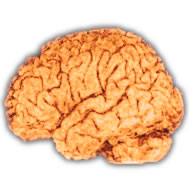Electrical brain stimulation triggered by the impending onset of a seizure could be used to prevent epileptic attacks, scientists have shown. 
Epileptic seizures are caused by intermitten bursts of abnormal nerve activity that are initiated in one region and then reverberate around the brain; this causes a variety of symptoms ranging from momentary "absence" or petit mal attacks, when sufferers may become blank for a few seconds, to "grand mal" epilepsy with loss of consciousness, collapse, muscle contractions, incontinence and confusion. And although drug therapy can help to keep the condition under control in the majority of cases, patients frequently suffer side effects and some forms of the disease fail to respond.
Now researchers from Hungary and the US have developed a brain stimulator that can quench the abnormal patterns of nerve activity that herald a forthcoming seizure.
The device works a bit like an automatic cardiac defibrillator, registering the pattern of ongoing electrical activity and only kicking-in if an abnormal pattern of brainwaves is picked up.
When this happens, the device supplies a series of small electrical discharges, at a rate of about once per second, which put large numbers of nerve cells into a temporarily insensitive state - called the refractory period.
Nerve cells desensitised in this way are then incapable of picking up and transmitting the abnormal bursts of activity that would normally spread around the brain and impair consciousness. And because the device is active only when potential fits are happening, the risk of long-term behavioural and psychological side effects is minimised.
To develop the device, published this week in the journal Science, Rutgers scientist Gyorgi Buzsaki implanted recording electrodes into the brains of rodents with an animal form of epilepsy. These were used to trigger the stimulator that applied low-voltage electrical pulses to the animals' skulls whenever brain activity called spike wave (SW) complexes associated with seizure activity were picked up.
The result was a more than 60% reduction in the duration of the SW episodes. This approach could, the scientists suggest, be scaled up to work in humans using small, unobtrusive electrodes implanted in the skull to control large groups of nerve cells.
The same system, they also point out, could be used to aid concentration and mood, along the lines pioneered by Sydney scientist Allan Snyder...










Comments
Add a comment